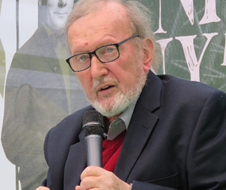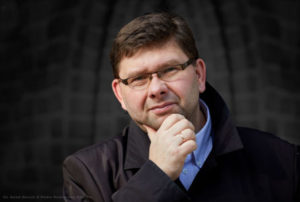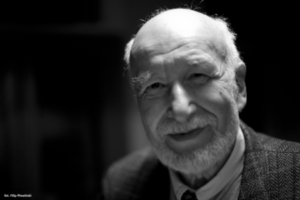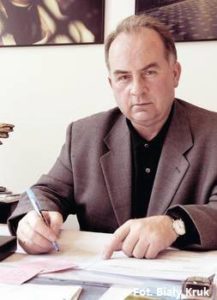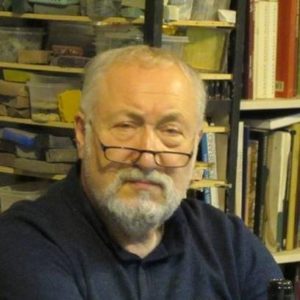The Per Artem ad Deum Medal has been awarded by the Pontifical Council for since 2005; it is bestowed to those who enhance dialogue between the diversity of cultures in the contemporary world.
Ernest Bryll awarded the Per Artem Ad Deum Medal 2021 for „poetry, that brings us closer to God and helps confront His absolute”
Ernest Bryll – a Polish poet, prose writer, playwright, journalist, film critic, diplomat, translator. A graduate from the Faculty of Polish Philology at the University of Warsaw. He studied film sciences at the Film School in Łódź. As a journalist he collaborated with “Po Prostu”, “Sztandar Młodych”, “Współczesność”, “Miesięcznik Literacki”. His debut as a poet came in 1958 with Wigilie Wariata (Christmas Eves of a Lunatic); however, his poems in the “Non-unveiled face” (1963) collection made him truly famous.
Bryll also worked as the artistic head of Teatr Telewizji (Television Theater; 1967-1968), as well as the ‘Kamera’ film group (1967-68), and Teatr Polski (Polish Theatre in Warsaw; 1970-1974). From 1974 to 1978 Bryl held the position of the Polish Culture Institute director in London. Bryll also lectured at the Silesian University in Katowice (1978-1979) and became the artistic head of the Silesia film group in Katowice (1978-1983). In the years 1991-1995, he was the Polish ambassador to Ireland. Ernest Bryll is also a translator of Irish, Czech, and Yiddish, songwriter (Peggy Brown and A Te Skrzydła Połamane [And Those Broken Wings]) and the author of song and music performances that tap into folk and regional themes. The most popular folk and regional works include the ” Po górach, po chmurach [The mountains, the clouds]” pastorale, in the “Painted on glass” highlander-robber atmosphere poem. “Golgotha of Jasna Góra” – a series of poems influenced and inspired by the Mystery of the Passion and the Polish tradition of the Way of the Cross, containing fascinating images by Jerzy Duda-Gracz (a well-known painter, draftsman and set designer) can also be mentioned here. The passion-themed poem was made into an album of the same title. The poetry set to music featured famous Polish artists: Joanna Lewandowska and Marcin Stycznia. The project was awarded with the Phoenix in the category of Christian music. The “Wieczernik” [Cenacle] play, based on evangelical themes, was staged in churches all over Poland. The “I Nie proszę o wielkie znaki [I Am Not Asking for Great Signs]” and “Jezioro Kałuża [Puddle lake]” are genuine religious events, as they contain a collection of truths about the world God lost somewhere along the way.
Bryll was bestowed the Order of the Companion of the Royal House of O’Conor (1995), as well as the Commander’s Cross of the Order of Polonia Restituta (2006). He has also been presented many literary awards, including the Władysław Broniewski Award
for poetry and the City of Warsaw Award.

